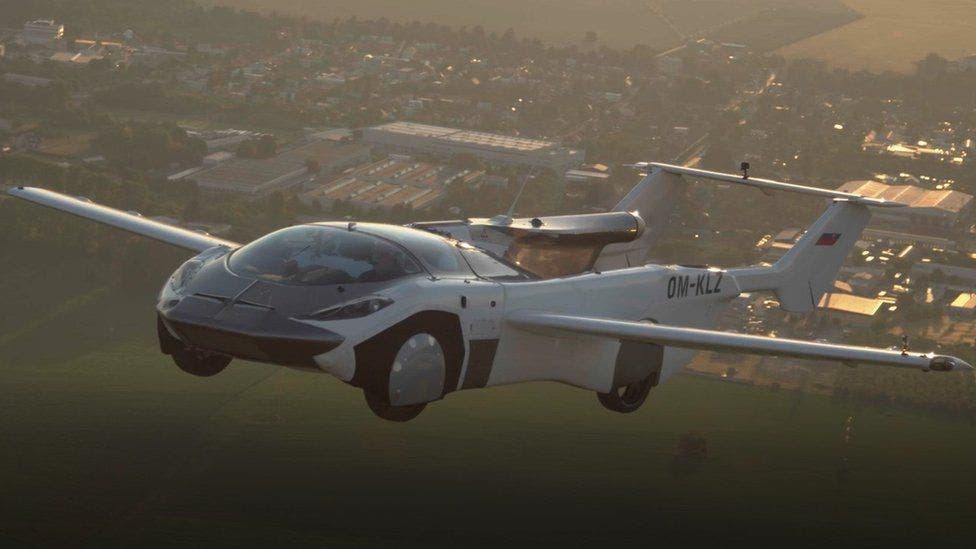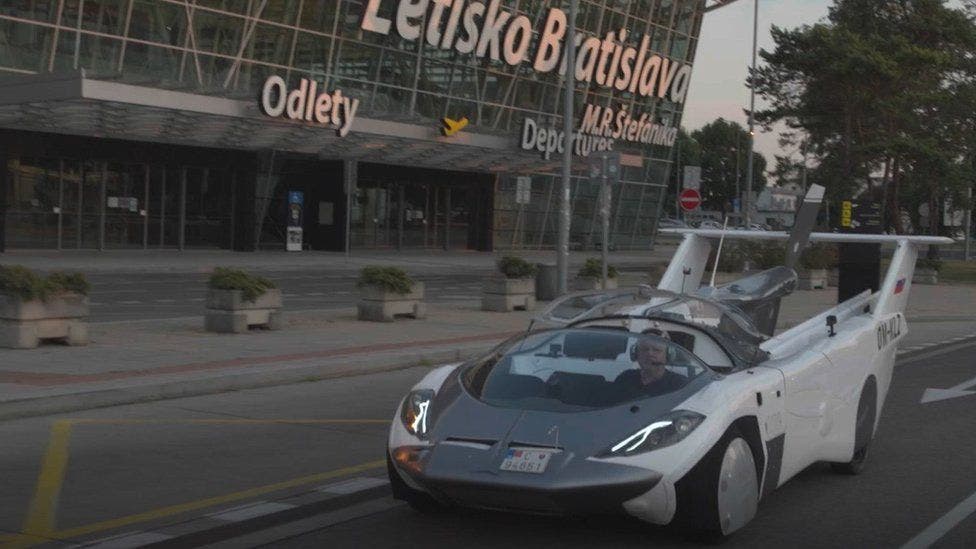
Engineers in Slovakia finally made a SciFi dream come true. Their hybrid car-aircraft vehicle, aptly dubbed AirCar, recently completed a daring 35-minute flight between the airports at Nitra and Bratislava. The vehicle transformed from a sleek four-wheeler into an aircraft in only two minutes and 15 seconds.
Real-life Transformers

AirCar is the brainchild of Professor Stefan Klein, CEO of Klein Vision. The company has developed the prototype over the last two years with less than two million euros in investment.
The AirCar Prototype 1 is powered by a 160 horsepower BMW engine and comes equipped with a fixed propeller. It has two narrow wings that fold down along the sides of the car when converted into airplane mode. It can carry up to two people.
During its maiden flight, the AirCar reached a cruising speed of 170 km/h (105 miles per hour). According to Klein, the AirCar could fly for nearly 1,000 km (600 miles) at an altitude of 2,500 meters (8,200 ft.).
Flying cars are believed to be an integral part of the transportation of the future, promising to clear some of the horrible traffic that plagues most busy cities across the world.
However, many limitations have to be overcome before we can commute to work like the Jetsons. The AirCar needs a runway to both takeoff and land. A drone-like vertical takeoff and landing would be required in order to enable mass adoption. Drivers would also require a pilot’s license to boot, which may be out of reach for many unless future prototypes are completely self-driving. However, an autonomous flying car would have to go through immense regulatory hurdles before it is allowed to carry people.
For their part, Klein Vision isn’t interested in taking cars off the road and into the sky. The company is interested in grabbing a share of the aircraft market rather than the auto market.
“There are about 40,000 orders of aircraft in the United States alone,” Anton Zajac, an adviser and investor in Klein Vision, told The BBC. “And if we convert 5% of those, to change the aircraft for the flying car — we have a huge market.”
Klein Vision is now working on a second prototype that will boast a 300-horsepower engine, allowing it a top cruising speed of 300 kilometers (186 miles) per hour. The company is also interested in three- and four-seater versions, as well as an amphibious model that will allow passengers to travel across land, water, and air.
Other companies are interested in the air-taxi business. At last year’s Consumer Electronics Show in Las Vegas, Uber and Hyundai unveiled plans for a joint venture consisting of an electric flying taxi. Volkswagen said early this year that it is currently looking to fly vehicles in China. Elsewhere, Porche, Daimler, and Toyota have all invested in startups known for developing electrical vertical takeoff and landing (eVTOL) vehicles. Last year, Toyota-backed SkyDrive completed the first flying car test in Japan’s history.


